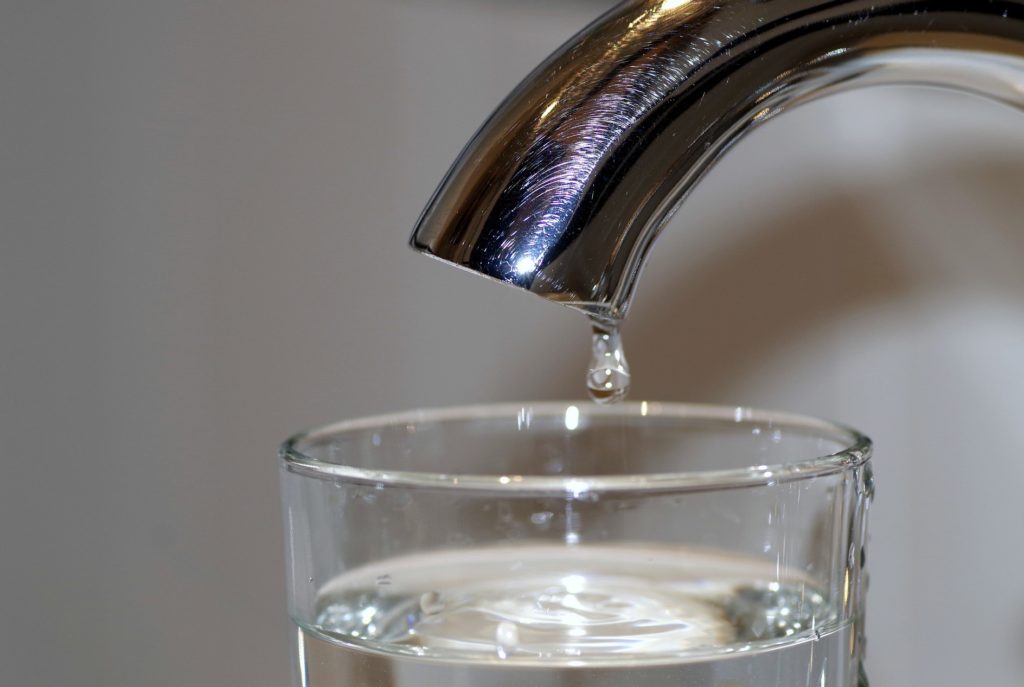Have you been hunting for ideas about Low Water Pressure in the House??

Low tide pressure in your house can be a discouraging problem, affecting every little thing from bathing to cleaning recipes. If you're experiencing weak water circulation, there are a number of possible causes and solutions to explore. In this guide, we'll review usual factors for low tide stress and practical actions to address the problem effectively.
Intro to Low Water Pressure
Low tide stress takes place when the flow of water from your faucets, showers, and various other fixtures is weak than typical. This can make everyday tasks a lot more difficult and much less reliable. Understanding the causes of low tide stress is important to discovering the ideal remedy.
Common Causes of Low Water Pressure
Faulty Pressure Regulators
Stress regulators are responsible for preserving consistent water pressure in your house. If they malfunction, it can result in low tide stress or irregular circulation throughout your home.
Community Water System Issues
Sometimes, the trouble exists outside your home. Local water system issues, such as main line leaks or maintenance work, can briefly decrease water stress in your location.
Pipeline Obstructions
Over time, pipelines can end up being clogged with mineral deposits, debris, or debris, limiting the circulation of water. This is a typical issue in older homes with galvanized steel pipelines.
Corrosion
Deterioration within pipelines can cause leaks and decreased water stress. Rust buildup can tighten water circulation, specifically in maturing plumbing systems.
How to Identify Low Water Stress
Checking Pipes
Examine visible pipes for indicators of leaks, rust, or blockages. Take notice of any kind of unusual sounds, such as banging or rattling pipes, which might show concerns within the plumbing system.
Consulting with a Plumber
If you're not able to determine the cause of low water stress, take into consideration employing a professional plumber to conduct a comprehensive examination. They can identify underlying problems and suggest ideal remedies.
Examining Faucets and Components
Begin by evaluating the water pressure at various faucets and fixtures throughout your home. If the concern is separated to specific locations, it may indicate localized problems.
Do It Yourself Solutions to Fix Low Water Pressure
Flushing Water Heater
Sediment buildup in the hot water heater can limit circulation and reduce efficiency. Flushing the container periodically assists eliminate sediment and keep optimum efficiency.
Checking Stress Regulator
Make certain that the pressure regulatory authority is operating appropriately. Readjusting or replacing the regulator can help bring back appropriate water stress throughout your home.
Cleaning Up Aerators and Showerheads
Mineral deposits can gather in aerators and showerheads, lowering water flow. Remove and clean up these components frequently to boost water stress.
Clearing Up Clogs in Water Lines
For minor obstructions, attempt using a plumbing serpent or chemical drainpipe cleaner to clear blockages in pipes. Beware when making use of chemicals and follow security standards.
When to Call an Expert Plumber
If do it yourself efforts fall short to settle the concern or if you presume significant plumbing troubles, it's ideal to look for support from a certified plumber. They have the experience and tools to resolve complex issues securely and properly.
Preventive Measures to Maintain Water Pressure
Mounting a Stress Booster
Take into consideration mounting a pressure booster pump to improve water pressure in locations with regularly low circulation. This can be especially advantageous for multi-story homes or buildings with high-demand components.
Monitoring Water Use
Bear in mind water usage routines and prevent overtaxing the plumbing system. Straightforward modifications, such as astonishing showers and laundry tons, can aid maintain sufficient water pressure.
Regular Upkeep
Set up regular upkeep for your plumbing system to avoid concerns such as deterioration, leakages, and obstructions. Dealing with minor problems early can assist stay clear of more substantial fixings later on.
Final thought
Dealing with low water pressure can be aggravating, however identifying the underlying causes and carrying out appropriate solutions can restore optimum circulation throughout your home. Whether it's cleaning aerators, checking pipes, or talking to a plumber, taking aggressive actions can guarantee a steady supply of water for your day-to-day demands.
How to Fix Low Water Pressure
Have you noticed the water pressure in your shower or taps seem a little weak? If so, the water pressure in your home may be lower than it should be.
Low water pressure can affect many areas of your home. You might notice it taking longer to fill the bathtub or washing machine or that you’re not getting the pressure you need from your garden hose.
These pressure changes can be sudden or may happen over time. It may take a little investigating to find the cause, but there’s usually an easy solution.
Testing Water Pressure in Your Home
One easy way to check water pressure at home is with a water pressure gauge. You can find one online or at a hardware or home improvement store.
Before you check the pressure, make sure the taps and appliances that use water are turned off. Then, connect the gauge to the exterior hose bib or tap.
Turn the tap up all the way and read the gauge to see the water pressure. If you don’t have an exterior tap, you can disconnect the hose of your washing machine and connect the water pressure gauge to it.
Make sure all your water-using appliances are turned off. Turn the faucet on high to read your home’s pressure or PSI.
If the idea of checking water pressure or dealing with plumbing issues on your own seems a bit daunting, you can call a professional plumbing service to handle the job.
They can help you find the root of your water pressure issues and determine the best solution to the problem.
Clear the Clogs
A clogged pipe is one of the most common issues that leads to low or no water pressure. Pipes can become clogged due to a buildup of mineral deposits.
This is especially true if you have hard water where you live. Even a small clog can reduce the pressure of water running through the pipes.
Clogs usually build up over time. People notice when it affects their showers or the appliances that use water every day.
There are products and tools for clearing clogs on your own or you can call a plumber. They have the expertise and the right tools to locate clogs and determine whether it’s better to repair or replace the pipe.
Clean or Replace Corroded Pipes
Do you live in an older home where the plumbing is decades old? If so, your pipes are probably prone to corrosion. This is especially true if the pipes are galvanised steel.
This material is likely to corrode after 20 years of use. Brass pipes average 40 to 70 years before corroding, while copper pipes are good for 50 years or more.
If you installed extra plumbing fixtures after building or moving into your home, there’s a good chance you could have corroded pipes. The more plumbing fixtures in the home, the harder your pipes have to work, and the more likely they will corrode.
It’s important to address pipe corrosion. Failing to fix the problem can lead to cracked pipes, major leaks, and water damage in your home.
Swapping out old plumbing pipes reduces the risk of corrosives. Updated plumbing produces cleaner and better-tasting water, too.
Seal the Leaks
Another cause of low water pressure could be a leak in the pipes or in the water line. Small cracks or holes leak water into unintended areas before the water can reach the various taps in your home.
If your basement or foundation has flooded, it’s a strong sign of leaking pipes. You can look for leaks by turning off the taps for a couple of hours. Then, check the water metre reading.
An increase may indicate a leak. To see or access the plumbing, check for wet spots or pooling water. If you find a leaking pipe, there could be more.
You may not be able to reach these spots on your own, so it’s a good idea to enlist the help of a professional plumber at this point. They can check all your pipes for leaks and repair or replace damaged ones to restore adequate water pressure.
It’s important to address water leaks right away. Standing water can lead to mould or mildew growing in your home.
Replace the Pressure Regulator
Do you have a pressure regulator in your house? It’s a valve that helps keep the water pressure entering your home at safe levels. A functioning regulator keeps the pressure constant and flowing at around 50 PSI.
High water pressure may damage your plumbing and lead to excess stress on your appliances that use water. When a pressure regulator fails, it can lead to an increase or decrease in pressure.
Sediment or debris in the value can cause a blockage. You can check the pressure regulator by attaching the pressure gauge to an outdoor spigot. If the pressure reads lower than the valve reported, the regulator may be faulty.
A plumbing expert can assess whether the pressure regulator is working for your home. It’s important to replace a failed regulator.
Instal a Booster Pump
Sometimes you may look everywhere to discover the cause of low water pressure but not find an answer. Talk to your neighbours to see if they’re having similar issues.
If other homeowners near you are experiencing water pressure problems, installing a booster pump may be a good solution. It can increase water pressure to the main supply line that runs to your home’s system.
An experienced pro in UK plumbing issues can help you install a booster and restore the water pressure to your house.
How to Fix Low Water Pressure
If you notice the water pressure in your home is less than what it should be, there are a variety of possible problems and solutions. If you’re not a plumbing expert or don’t have the time to spare for DIY plumbing issues, call the pros instead.
At PM247, we know how to improve low water pressure in your home. Simply tell us the plumbing issue you’re having and we will take it from there.
For over 20 years, we’ve provided professional plumbing, drainage, roofing, heating, and electrical services to our customers. We would love to help you, too!
https://www.pm247.co.uk/blog/how-improve-low-water-pressure/

I'm certainly very enthusiastic about 4 Ways to Troubleshoot Low Water Pressure and I'm hoping you enjoyed reading the new article. Do you know about another individual who is involved in 9 Reasons for Low Water Pressure in Your House? Feel free to share it. Thank-you for your time spent reading it.
Schedule
Comments on “The Ultimate Handbook to Fixing Low Water Pressure in Your Home”